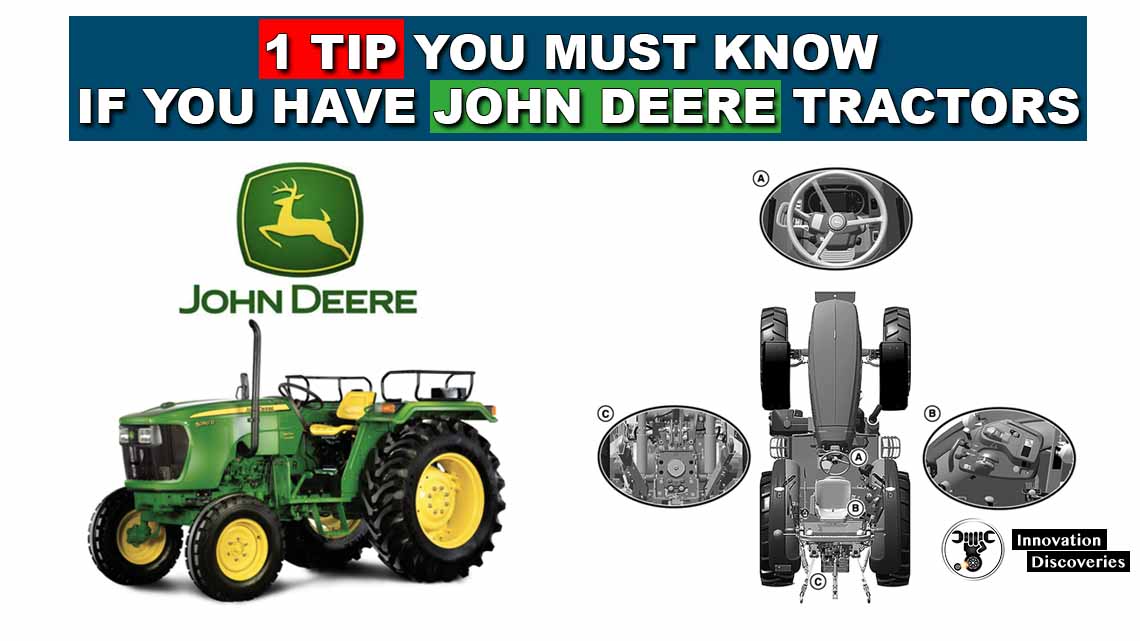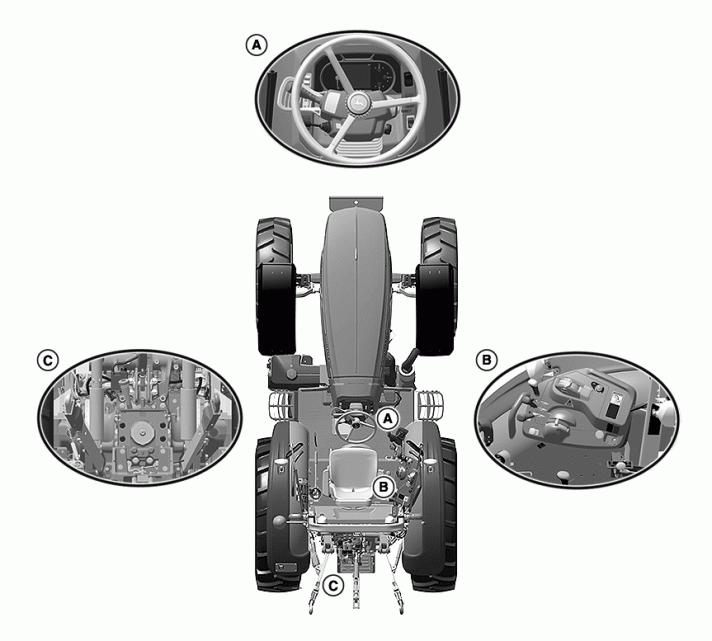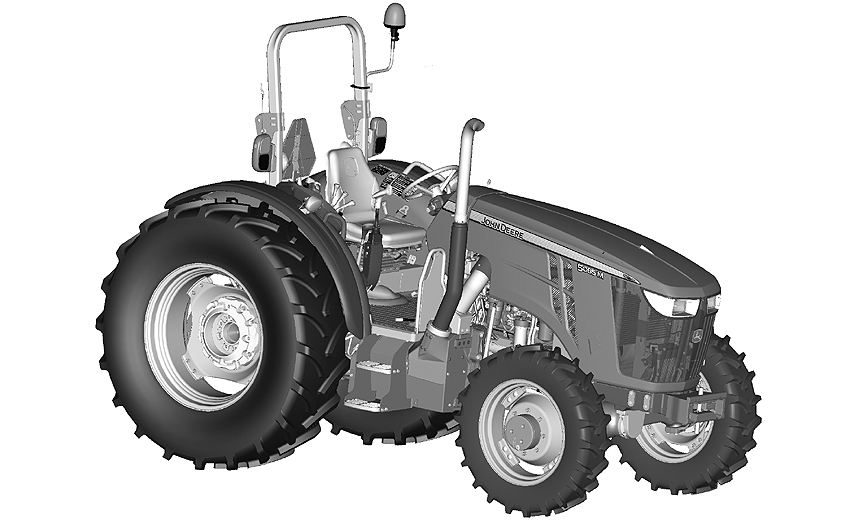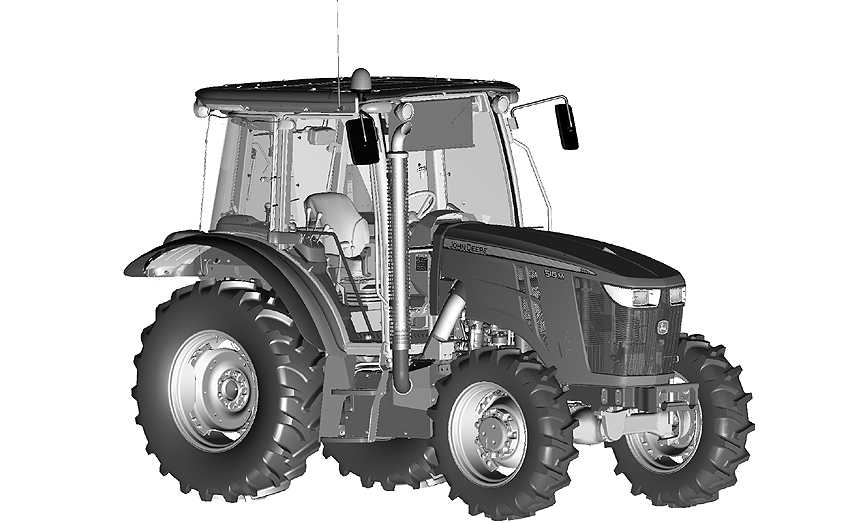
If you have John Deere tractors, one essential tip you should know is to regularly maintain and service your equipment. Proper maintenance can help extend the lifespan of your tractors and ensure their optimal performance. Here are some key aspects to focus on:
1. Follow the manufacturer’s maintenance schedule:
John Deere provides specific maintenance guidelines for each tractor model. These guidelines include recommendations for oil changes, filter replacements, inspections, and other routine maintenance tasks. It’s crucial to follow these guidelines and keep track of maintenance records.
2. Check fluid levels and quality:
Regularly inspect and maintain proper fluid levels, including engine oil, coolant, hydraulic fluid, and transmission fluid. Additionally, ensure that the fluids are clean and free from contamination. Dirty or low fluid levels can cause significant damage to your tractor’s components.
3. Inspect and replace filters:
Filters play a vital role in keeping your tractor’s systems clean and functioning optimally. Check and replace air, fuel, and hydraulic filters as per the manufacturer’s recommendations. Clogged filters can decrease performance and increase fuel consumption.
4. Keep the tractor clean:
Regularly clean your tractor, both internally and externally. Remove dirt, debris, and any other foreign materials that may accumulate on the tractor’s surfaces. This will help prevent corrosion and ensure better cooling of engine components.
5. Monitor tire pressure:
Proper tire pressure is essential for optimal traction, fuel efficiency, and overall performance. Regularly check and maintain the recommended tire pressure for your specific model. Underinflated or overinflated tires can lead to uneven wear, decreased efficiency, and compromised stability.
6. Lubricate moving parts:
Pay attention to lubrication points specified in the tractor’s manual. Regularly grease or oil these areas to minimize friction and wear on moving parts, such as joints, bearings, and pivot points. Proper lubrication can significantly extend the life of these components.
7. Store the tractor properly:
When your tractor is not in use, store it in a clean, dry, and protected environment. Ideally, it should be stored indoors to shield it from harsh weather conditions and prevent rust or damage. If outdoor storage is the only option, use a waterproof cover to protect the tractor.
Remember that these tips are general guidelines, and it’s crucial to consult your John Deere tractor’s specific manual for detailed maintenance instructions and intervals. Following proper maintenance practices will help ensure the longevity, reliability, and performance of your John Deere tractors.
Here are the top 5 reasons you should read your owner’s manual:
Reading your owner’s manual is crucial for understanding and maximizing the benefits of any product or equipment you own. When it comes to owning a John Deere tractor, here are the top five reasons why you should read your owner’s manual:
1. Familiarize Yourself with the Equipment:
The owner’s manual provides detailed information about the features, controls, and functions of your John Deere tractor. By reading the manual, you can become familiar with how to operate and navigate the tractor efficiently and safely. Understanding the equipment’s capabilities will help you make the most of its features and optimize performance.
2. Ensure Safe Operation:
Safety should always be a top priority when operating any machinery. The owner’s manual contains essential safety guidelines, precautions, and warnings specific to your tractor model. It provides information on proper operation techniques, safety procedures, and potential hazards to be aware of. Reading the manual helps you understand and follow the recommended safety practices, reducing the risk of accidents or injuries.
3. Maintenance and Care Instructions:
The owner’s manual provides comprehensive maintenance guidelines, including routine service schedules, fluid specifications, filter replacements, and lubrication points. Following the manufacturer’s maintenance recommendations is crucial for the longevity and optimal performance of your tractor. The manual will outline step-by-step procedures for maintenance tasks, ensuring you have the necessary knowledge to keep your tractor in excellent condition.
4. Troubleshooting and Diagnosing Issues:
Sometimes, equipment can encounter issues or malfunctions. The owner’s manual often includes troubleshooting guides and diagnostic procedures to help you identify and resolve common problems. By consulting the manual, you can save time and effort in troubleshooting and potentially avoid unnecessary repairs or service calls.
5. Warranty Information and Support:
The owner’s manual contains important warranty details, including coverage, terms, and conditions. It also provides information on how to contact customer support or service centers for assistance. Understanding the warranty coverage and knowing where to seek support can be beneficial in case you encounter any issues or require technical assistance.
Reading your owner’s manual is a valuable investment of your time, as it empowers you with the necessary knowledge to operate, maintain, troubleshoot, and seek support for your John Deere tractor. It ensures your safety, maximizes performance, and helps you make informed decisions regarding the care and operation of your equipment.
Here is how you can find manuals
Here is an example search









One Comment